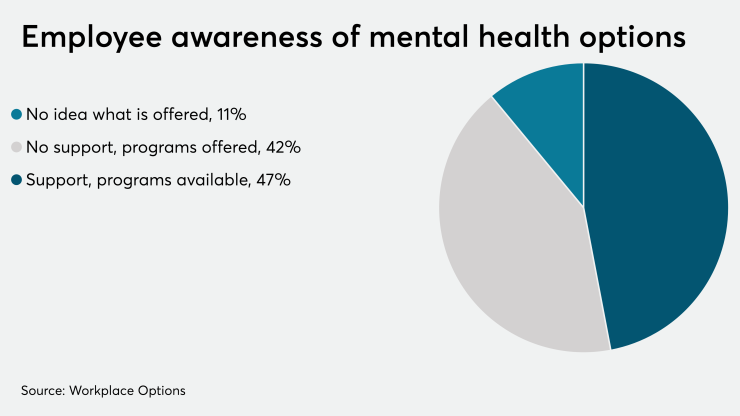Employers have been vigilant about helping employees get screened for diseases like cancer and other chronic illnesses in an effort to improve the physical well-being of their workforce, thus creating a more loyal and productive staff. However, employers have been less focused on one particular condition that impacts one in eight employees: depression.
Though depression impacts 16.2 million Americans, according to the National Institute of Mental Health, only one in 10 people get the recommended screening for a diagnosis. Depression costs employers an estimated $44 billion each year in lost productivity, according to the American Psychiatric Association Foundation.
Closing these screening gaps can be a major savings opportunity for employers, by preventing disability leaves in the most severe cases, according to a recent survey by the Integrated Benefits Institute, a non-profit health and productivity research organization.
“The research shows that 95% of people are not being screened appropriately for depression,” says Kelly McDevitt, president of IBI. “We know that behavioral health is a key focus for all employers right now as people are stuck at home. Depression is on the rise and suicide rates are growing exponentially.”
The United States Preventive Services Task Force, an independent panel of experts in primary care and prevention, recommends screening for depression in the general adult population, including pregnant and postpartum women. These screenings should be implemented with adequate systems in place to ensure accurate diagnosis, effective treatment, and appropriate follow-up, according to the USPSTF.
While 34% of organizations offer onsite healthcare screenings to their employees, they are typically for illnesses like cancer and diabetes, according to the Society for Human Resource Management. Depression and other
Read more:
COVID-19 has exacerbated
“Throughout the COVID-19 pandemic, we’ve seen firsthand how the changes and challenges workers have faced have significantly impacted mental and physical health. In fact, research found 41% of employees feel burnt out, drained, or exhausted from their work,” says Wendi Safstrom, executive director of the SHRM Foundation. “Now, more than ever, it’s critical for HR professionals to help employers and employees manage the significant mental toll of COVID-19, and even beyond as companies prepare to reopen.”
Without proper screening and intervention, employees may have to take a long disability leave of absence, a greater expense to an organization. Depression costs $17 per employer per year in disability wage replacement costs, compared with $2 for diabetes, the next-highest chronic condition, according to the survey.
“Although depression is the least prevalent of the chronic conditions examined in this report, it is associated with the worst outcomes, in both number of claims and disability leave payments,” the report says. “Improved screening rates may reduce both the claims rates and the payments per incidence by reducing the severity of depression where it still occurs.”
While identifying symptoms early on leads to a greater probability that employees won’t need to go out on disability, the IBI research found that waiting to be screened causes a fluctuation in the cost of that disability, leading to much higher medical claims.
The average cost for employees to take a leave for a mild form of a chronic condition can be up to 52% lower than the average cost of a severe form of that same chronic condition, according to the IBI research. .
Employers have a responsibility to provide more than just salary and retirement benefits, McDevitt says. Employees want their benefits to impact their health in a more holistic way.
“If employers didn't have a wellness and preventive care strategy in place before the pandemic, they need to get one,” she says. “If they had a strategy in place, and they were doing pretty well at it, they need to double down because the cost related to delayed care could be catastrophic.”






